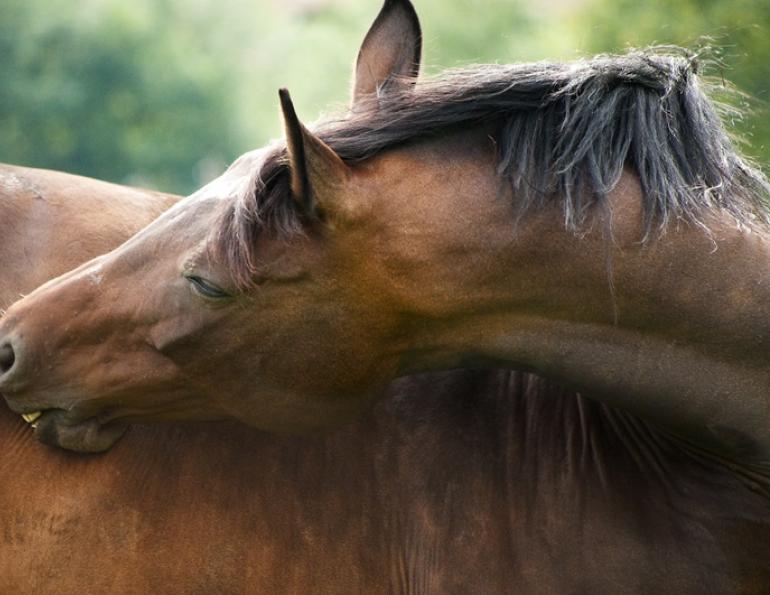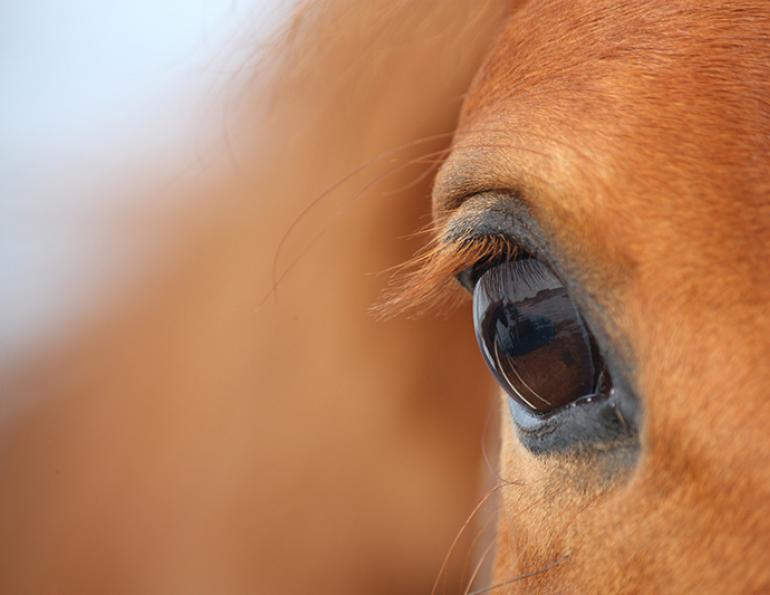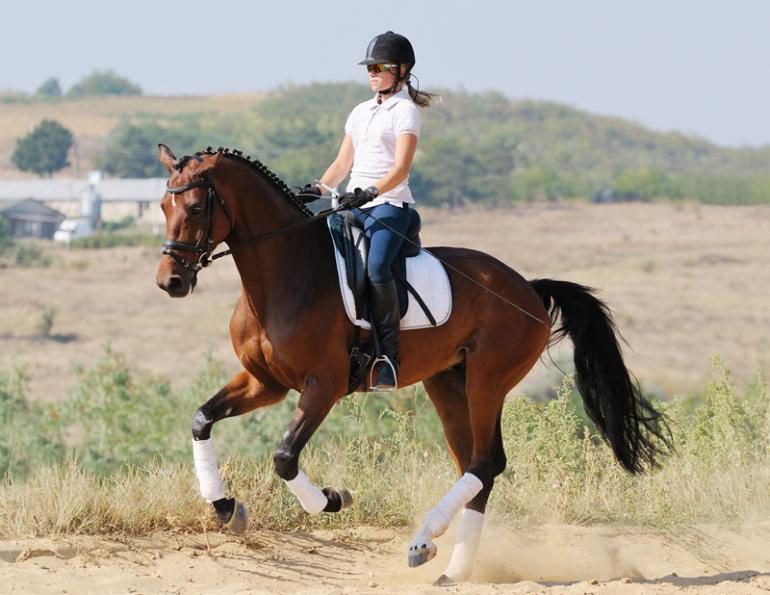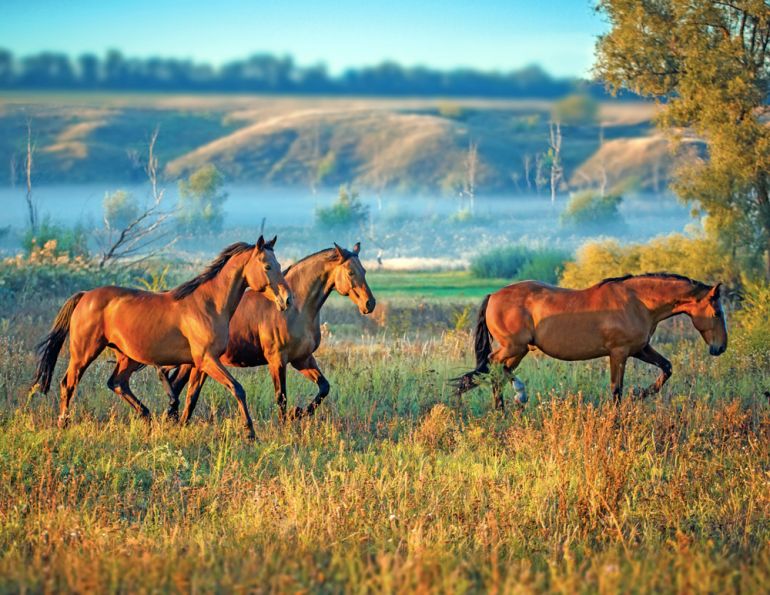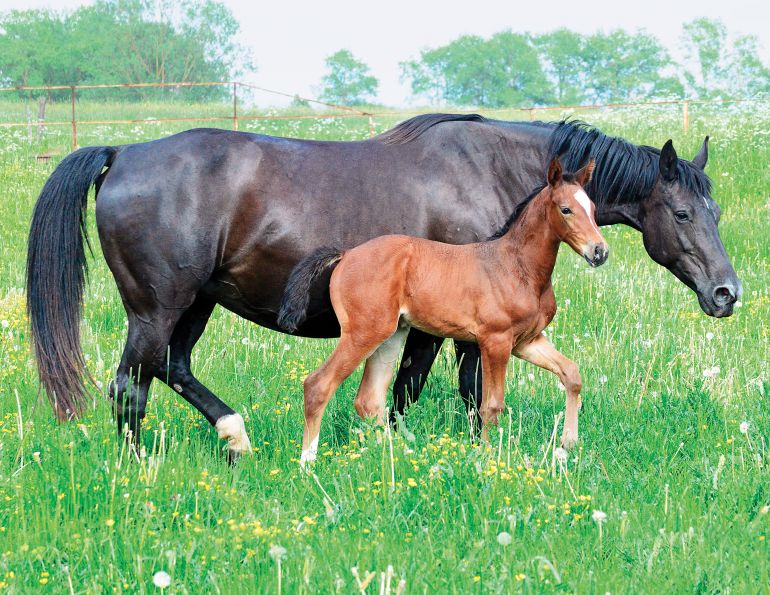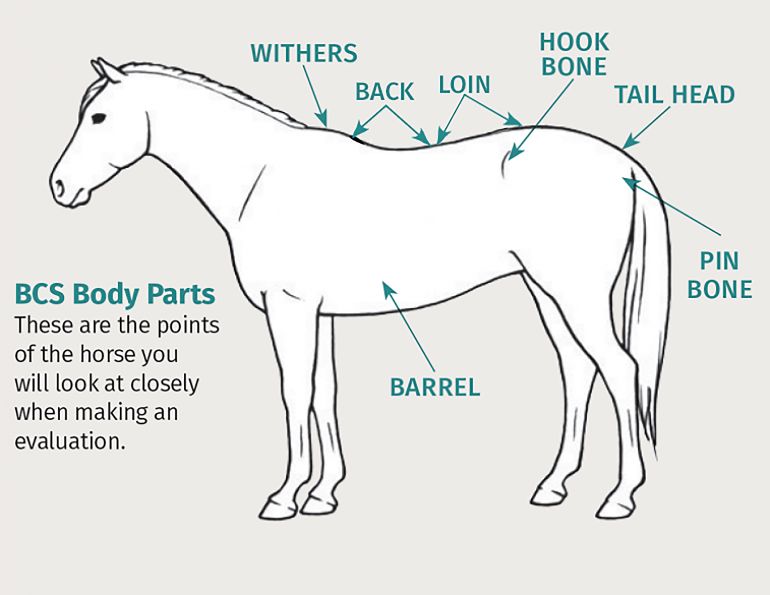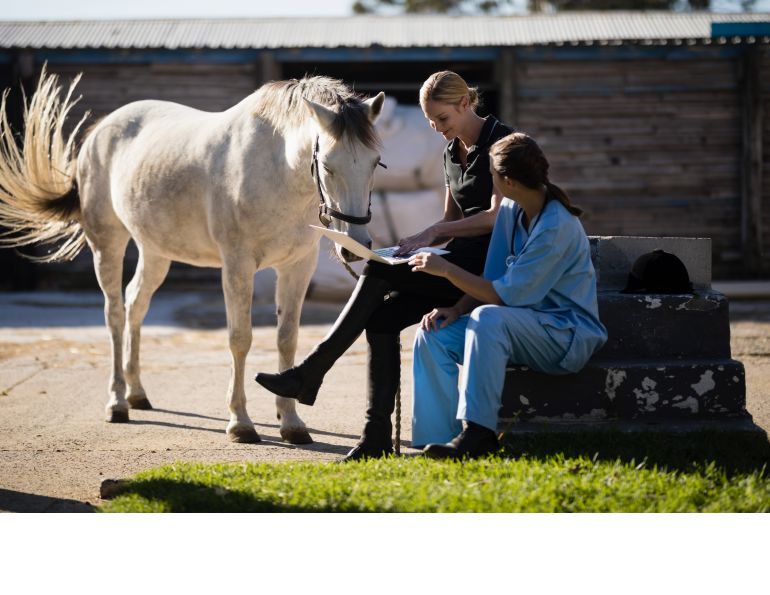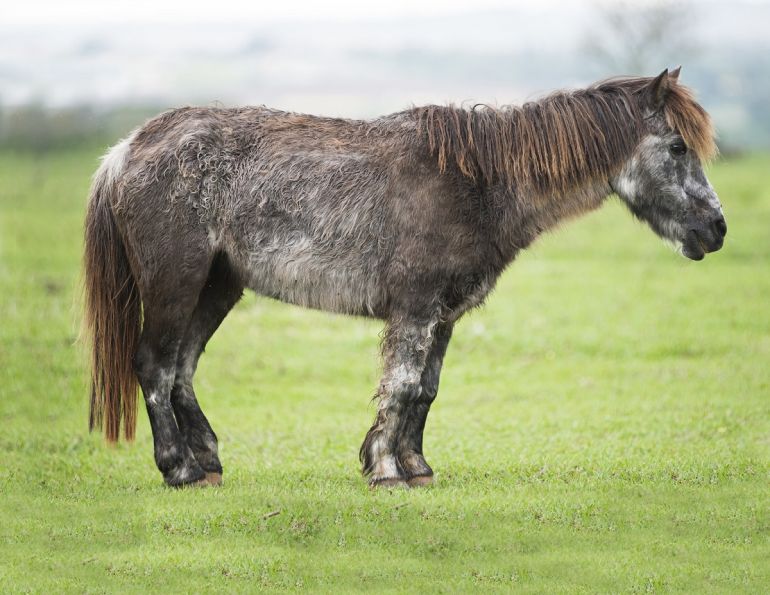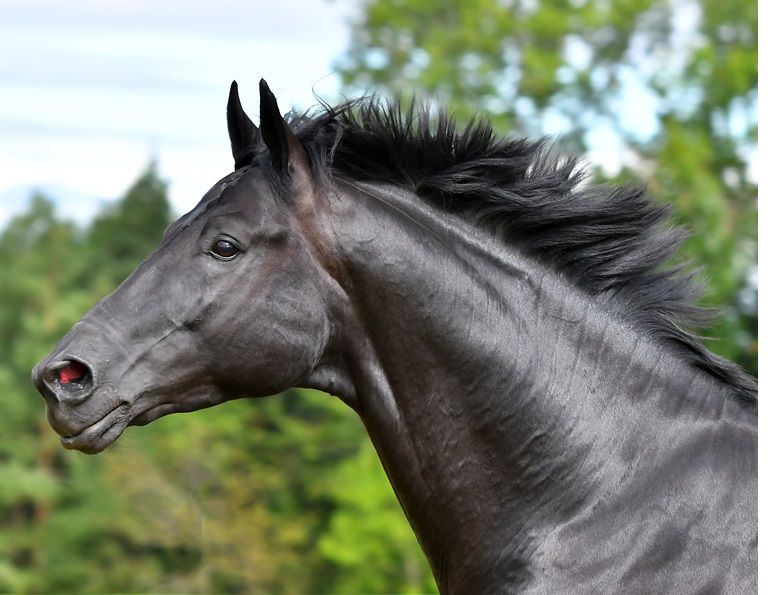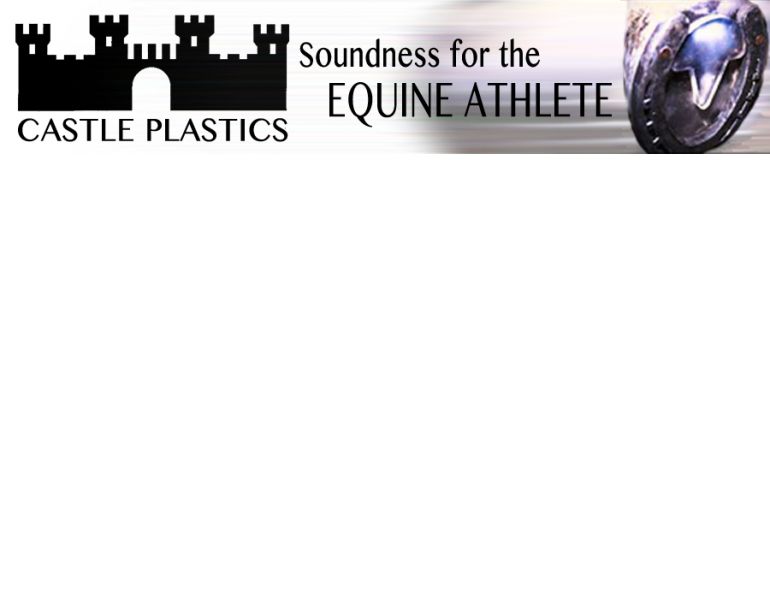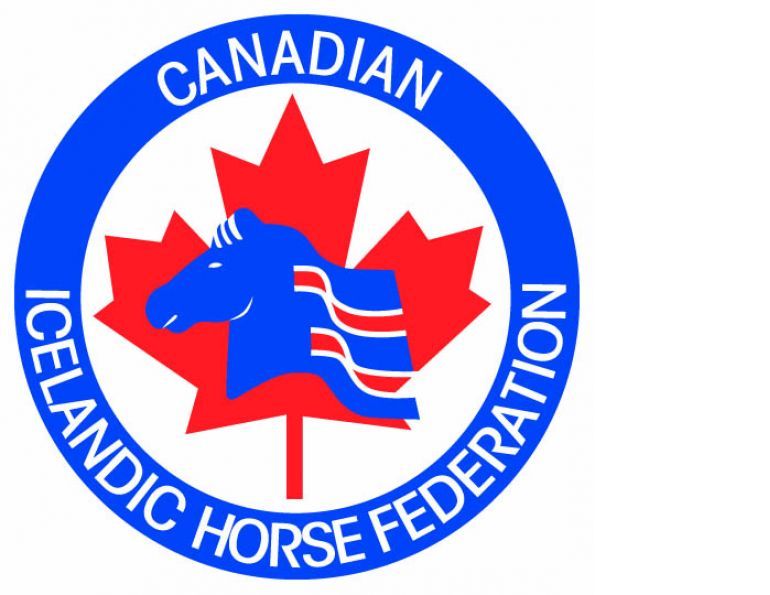By Kentucky Equine Research
Colic is a fact of life for horse owners. Chances are very good that anyone who keeps horses for several years will encounter colic at some time. Mild episodes may resolve on their own before a veterinarian can arrive and more serious equine abdominal discomfort can often be managed with medication. Surgical intervention is available at clinics all over the country when it is deemed necessary for severe cases.
If colicky horses usually recover with no negative effects, why do horse owners still fear colic? The answer may be tied to the fact that a horse may have what appears to be a simple bellyache at first, yet may have other conditions present that make it impossible to save him.
Large and Small Intestine Colic
Colic of the large intestine can result from gas or fluid distension, obstruction (impaction or enteroliths), or twisting of the gut (as in large intestinal volvulus or displacement of the large colon). The clinical signs of large intestinal colic are moderately elevated heart rate (60 to 80 beats per minute or more, whereas normal is 28 to 40 beats per minute) and mild to moderate pain that is often intermittent. Usually there is no gastric reflux when a nasogastric tube is passed into the stomach.
Impactions are dry masses of feed material that lodge in the intestine and occlude it. The intestine can spasm which further squeezes water from the impaction and this produces more pain. Fluid or gas will accumulate ahead of the impaction and distend the gut.
One of the most common areas for impaction of the large intestine is the pelvic flexure. The pelvic flexure is a 180 degree turn between the left ventral and the left dorsal colon; it is normally found in the lower left of the horse's abdomen and is easily palpated rectally. This hairpin turn and narrowing of the large intestine predispose it for impaction, but impactions can occur anywhere in the large intestine. Fortunately, pelvic flexure impactions usually respond well to medical management, although affected horses will sometimes need to be hospitalized to receive intravenous fluids in order to remain hydrated.
The Digestive System of the Horse
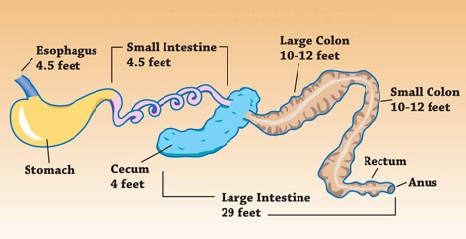
Enteroliths are concretions of mineral that usually form around a foreign body such as baling twine or fencing debris. As an enterolith enlarges, it can act as a ball valve in the large intestine, causing a build-up of fluid and gas ahead of it. The enterolith can slip back into a position where the gut is not occluded and colic can resolve with routine therapy. This makes enteroliths difficult to diagnose because they are difficult to palpate rectally even when they cause colic. Depending on the size of the horse and location of the enterolith, the blockage can sometimes be diagnosed using abdominal radiography (X-ray). Enteroliths are most often diagnosed during exploratory surgery. Several studies have shown that enteroliths are more common in California, in Arabian horses, and in horses over four years of age.
Enteroliths are composed of magnesium, calcium, and variable amounts of other minerals. Diets high in alfalfa are a recognized risk factor for enteroliths. It is believed that the combination of high dietary calcium, magnesium, and elevated concentrations of ammonia in the gut when protein is digested all contribute to enterolith formation. The only practical way to prevent enteroliths is to restrict or eliminate alfalfa from the diet.
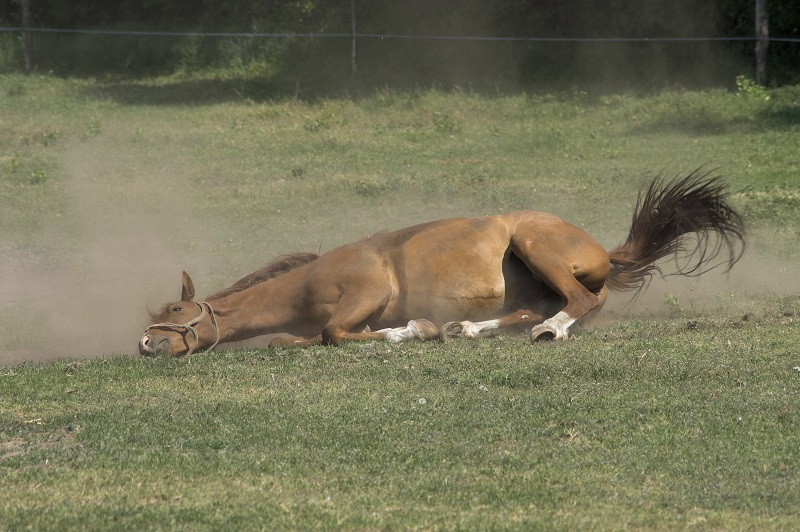
Above/Below: Signs of colic include frequent rolling, lying down more than usual, kicking or biting at the abdomen, standing frequently as if to urinate, anorexia, decreased fecal output, increased pulse, and decreased intestinal sounds.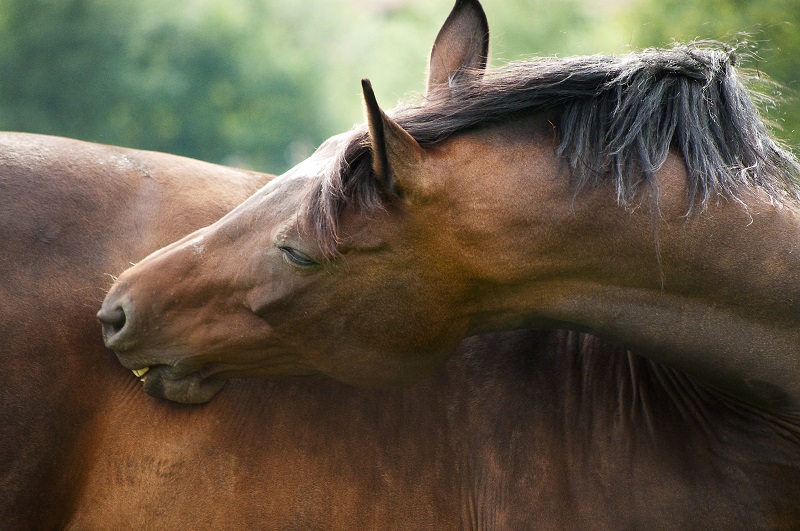
One of the most severely painful and potentially devastating large intestinal problems is large colon volvulus (twist). These are more common in postpartum mares but can occur in any horse. It is important that large intestinal volvulus is recognized within a few hours of onset so the organ can be surgically untwisted and recover.
The large colon can displace, or move from its normal position in the abdomen, and not necessarily twist. Pain still occurs due to tension on the gut or accumulation of gas. Large colon displacements tend to have a favourable surgical prognosis. An example is left dorsal displacement or nephrosplenic entrapment, in which the left colon rises up over the nephrosplenic ligament (a ligament between the spleen and left kidney) and becomes entrapped. Many cases will need surgical correction, but some resolve with medical therapy to shrink the spleen or by rolling the horse under general anaesthesia.Small intestinal colic can result from gas or fluid distension, obstruction of the small intestine (ileal impaction or roundworms), or twisting of the gut (small intestinal volvulus or pedunculated lipoma in old horses).
In general, small intestinal colics are more worrisome than large intestinal colics. The usual hallmarks of small intestinal colic are elevated heart rate (80 beats per minute or more), gastric reflux when a nasogastric tube is passed into the stomach, and severe pain that is difficult to relieve. Despite the intense pain, the horse often becomes comfortable when the gastrointestinal tract is decompressed with nasogastric siphonage.
Ileal impaction is a frequent diagnosis of small intestinal colic where coastal bermudagrass is a readily available forage. Coastal bermudagrass hay has a high fibre content compared to most other forages and is more likely to cause impactions, especially in dehydrated horses. Tapeworm infections and thickening of the muscular layer of the ileum (muscular hypertrophy) in some older horses also predispose horses to ileal impaction.
Occasionally, a segment of gut may be so severely damaged that it must be removed and the two healthy ends sewn back together (resection and anastomosis), or some sort of gastrointestinal bypass has to be performed. Up to half of the small intestine can be removed without any adverse effects.
The vast majority of intestinal colic episodes in horses respond well with passage of a nasogastric tube to relieve gas or fluid accumulation, administration of drugs for pain (flunixin or butorphanol, for instance), and potentially laxatives (mineral oil).
Colicky horses that remain painful despite aggressive therapy require exploratory surgery to diagnose and correct the cause of abdominal pain.
Horses that have had a colic episode that responded well to routine medical therapy are usually best managed with an additional two to three days of dietary modification. Whenever colic occurs, it is useful to review if anything has changed in the horse’s life that may have led to colic, such as cold weather that may have decreased water intake or a change in hay or concentrate feeding (different source or an increased amount).
Fasting for 12 to 24 hours is a good practice to decrease the amount of feed material in the horse’s gut and to allow the gut to rest. The horse can be offered small, frequent drinks of water to maintain hydration. Most veterinarians recommend some period of feed restriction and decreased concentrate feeding for one to two days after a colic episode. Short hand-grazing sessions (five to fifteen minutes) are excellent to allow some feed intake, and walking generally promotes movement of feed through the intestine. Many veterinarians also recommend that the horse receive only 50 percent of its normal concentrate diet for the first day after colic. Refeeding the horse with several frequent (every four to six hours) small meals for one to two days gradually transitions the horse back onto full feed. If hay is restricted, it can be sprinkled throughout the horse’s stall to stimulate grazing and prolong the horse’s eating time.
Horses that have had surgery are more complicated to nourish; how soon the horse is fed and what the horse eats depends on the extent of surgery. No surgical case is exactly the same and feeding recommendations will vary based on the lesion identified at surgery, whether a resection and anastomosis or bypass procedure was required, and surgeon experience and opinion.
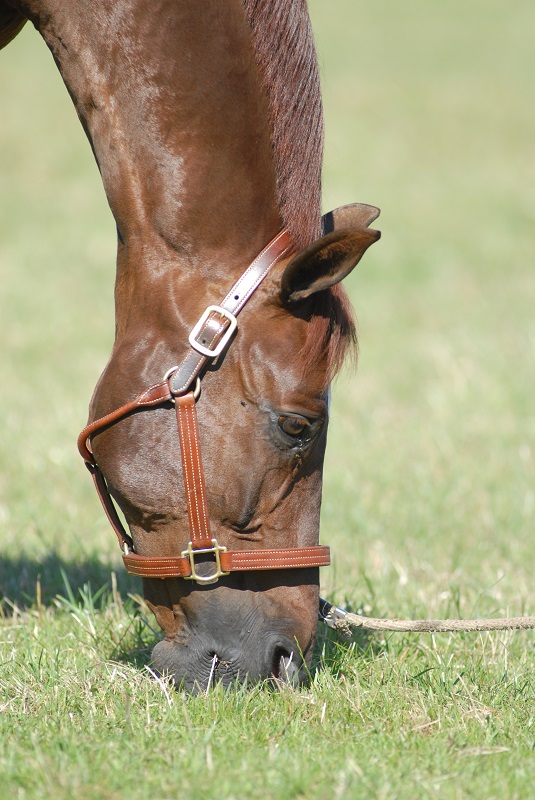
After recovering from colic, five to fifteen minute hand-grazing sessions are good for feed intake, and walking promotes the movement of feed through the intestine. Photo: Robin Duncan Photography
Healthy adult horses can tolerate many days of feed deprivation as long as they are kept hydrated. Horses that have had a resection and anastomosis or any type of gastrointestinal bypass will require a longer period of fasting and a more gradual return to full feeding. Initially, the strength of the surgical repair depends solely upon the suture material. The repair site strengthens gradually as intestinal healing occurs. For this reason, most surgeons will completely fast the horse for two days before a gradual return to feed if a bypass, resection, or anastomosis was performed. It is important to avoid bulk in the intestine for several days to ease strain on the intestinal repair site and to allow the best chance for a strong and healthy return to gut function. If no gut was removed and the intestine appeared fairly healthy, then the horse may be fed as for a routine colic. Horses that have had small intestinal surgery benefit the most from small, frequent meals for several days postoperatively. Regardless, it is important to not rush the horse back onto feed so maximal healing occurs. Access to fresh grass is better than hay to avoid excessive roughage.
Bran mashes are commonly recommended as a preventive or treatment for large intestinal impactions. However, research has shown that feeding bran mash does not increase the water content of manure and provides no laxative effect. Bran mash has little potential to do any harm unless there is a deficiency of calcium in the diet, which creates an excessive dietary phosphorus-to-calcium ratio. Perhaps the best we achieve with feeding bran mashes is to increase the horse’s water intake and keep colicky horses eating.
Stomach Colic
Though fewer than five percent of colic cases are caused by problems in the stomach, rupture of this organ (a rare but very serious development) makes these cases significant. Gross stomach distension can be caused by several factors. The most common are overconsumption of water or grain; parasite infestation; and any mechanical condition, such as a twisted intestine, that prevents food from moving out of the stomach.
A horse that is deprived of water for an extended period of time may drink too much when access is restored. Ingesting a large amount of cold water can cause a temporary spasm of the pylorus (opening from the stomach into the small intestine) resulting in stomach distension and pain. This condition is usually fairly brief and often resolves without the need for veterinary intervention.
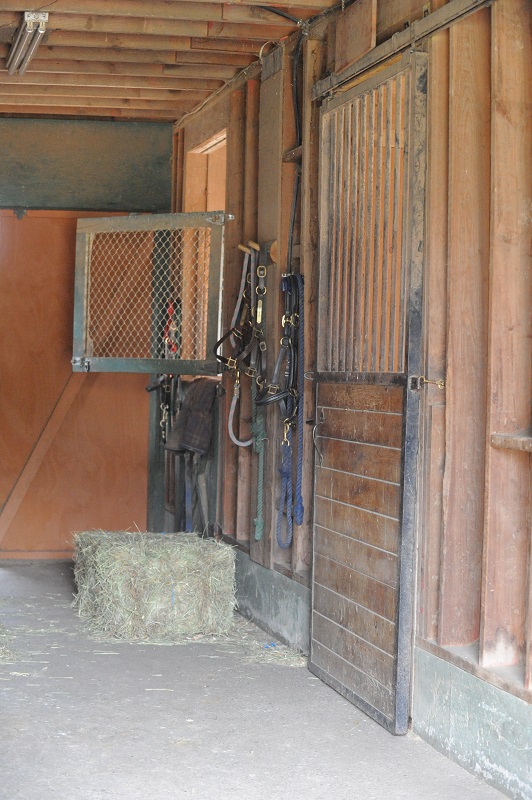
Make sure a horse cannot get access to where grain is stored. Latches and locks on stalls, gates, feed room doors, and feed bins should be horse proof. Photo: Robin Duncan Photography
Overeating of grain is another common cause of stomach distension. In a typical scenario, a horse is accidentally allowed access to the feed room or a large quantity of feed is delivered and stacked in an area where horses can reach it. The horse’s stomach is relatively small, with a capacity of only about two to four gallons (8 to 16 litres). Because of this limited capacity, a horse can quickly eat more grain than the stomach can handle. If the grain stays in the stomach for an extended period, fermentation may occur, producing gas that contributes to distension and pain. Fullness also triggers waves of contractions designed to push food into the small intestine, increasing discomfort if the food is not able to leave the stomach. Most mammals that overeat are able to vomit to relieve the pressure of a full stomach, but due to the anatomy of the equine soft palate and epiglottis, vomiting is usually not possible for the horse. Stomach rupture can occur in rare circumstances where the stomach contents cannot move further into the digestive tract.
The impact of parasites on equine health is not as significant as it was before the development of inexpensive and easily used deworming preparations. Bot fly larvae spend part of their life attached to the lining of the stomach, where a light infestation usually does not significantly affect the horse’s health. Heavier parasite loads sometimes cause irritation or ulceration of the stomach, and perforation and peritonitis occasionally result. Horses that are not regularly dewormed may support bot larvae in sufficient numbers to block the passage of food out of the stomach and gastric rupture has been reported in such cases.
Anyone who has observed a colicky horse will recall the relief to horse and handlers when the intense pain finally subsides. Usually this occurs fairly rapidly after a veterinarian administers an injection to calm the horse and relieve discomfort. A sudden cessation of colic pain is not always a positive development, however, as it may be a signal that the stomach has ruptured. The horse initially feels better because the pressure of an overfilled stomach is no longer causing pain, but will soon show muscle tremors, rapid weak pulse, fast shallow breathing, and dropping body temperature. A ruptured stomach is almost always followed by death within a few hours.
Although colic occurs even on farms that are carefully managed, some easy steps can be taken to decrease the chances of a serious incident:
- Make sure horses have access to fresh, clean water at all times except directly after exercise when the horse is hot. Unless a horse has been unable to get to water for some time, he will usually not drink enough water to cause stomach distension. A hot horse should be given a chance to drink every few minutes throughout the cool down period and should be walked until his temperature returns to normal.
- Every precaution should be taken to prevent the possibility of a horse getting into an area where grain is stored. Fasteners on gates, barns, stalls, feed room doors, and feed bins should be horse proof. Make it a practice never to leave the feed room open, even for a few minutes.
- Feed no more than five pounds of grain in one meal. If a horse eats more than five pounds of grain a day, break the total amount into two or more separate feedings. Any changes in feed type, amount, or schedule should be made over a period of several days.
- Deworm on a regular basis. Consult a veterinarian for a suggested deworming schedule.
- When in doubt, call the vet. Because it is difficult for an untrained person to determine the cause of abdominal pain in a horse, it is strongly recommended that a veterinarian be called to examine and treat any horse showing signs of colic.
Related: What Are You Vaccinating Your Horse Against?
Related: How to Check Your Horse's Vital Signs



